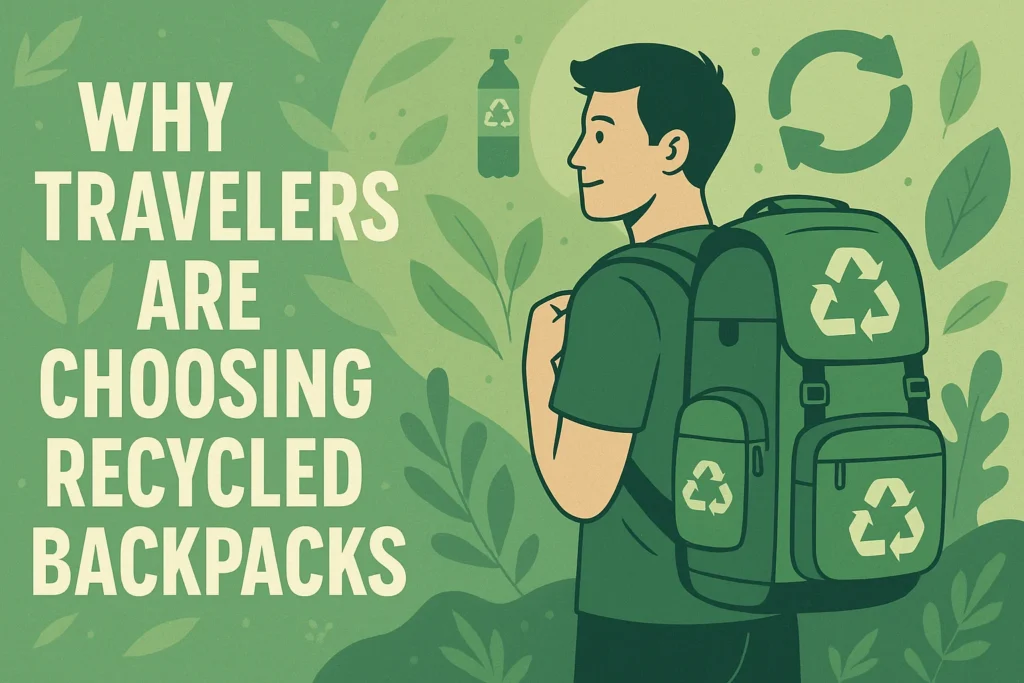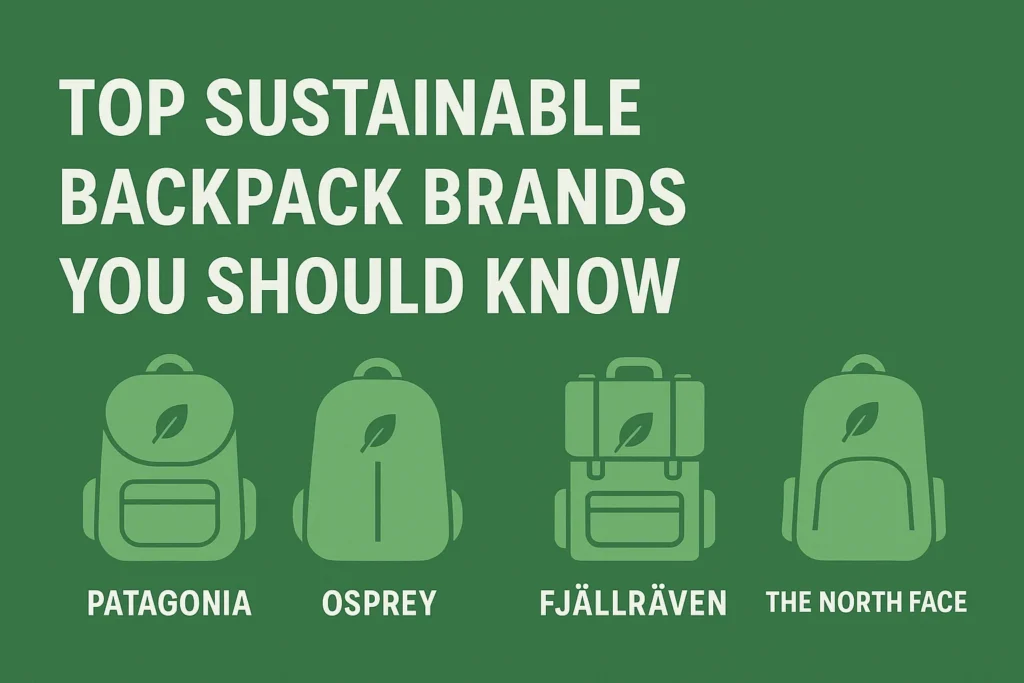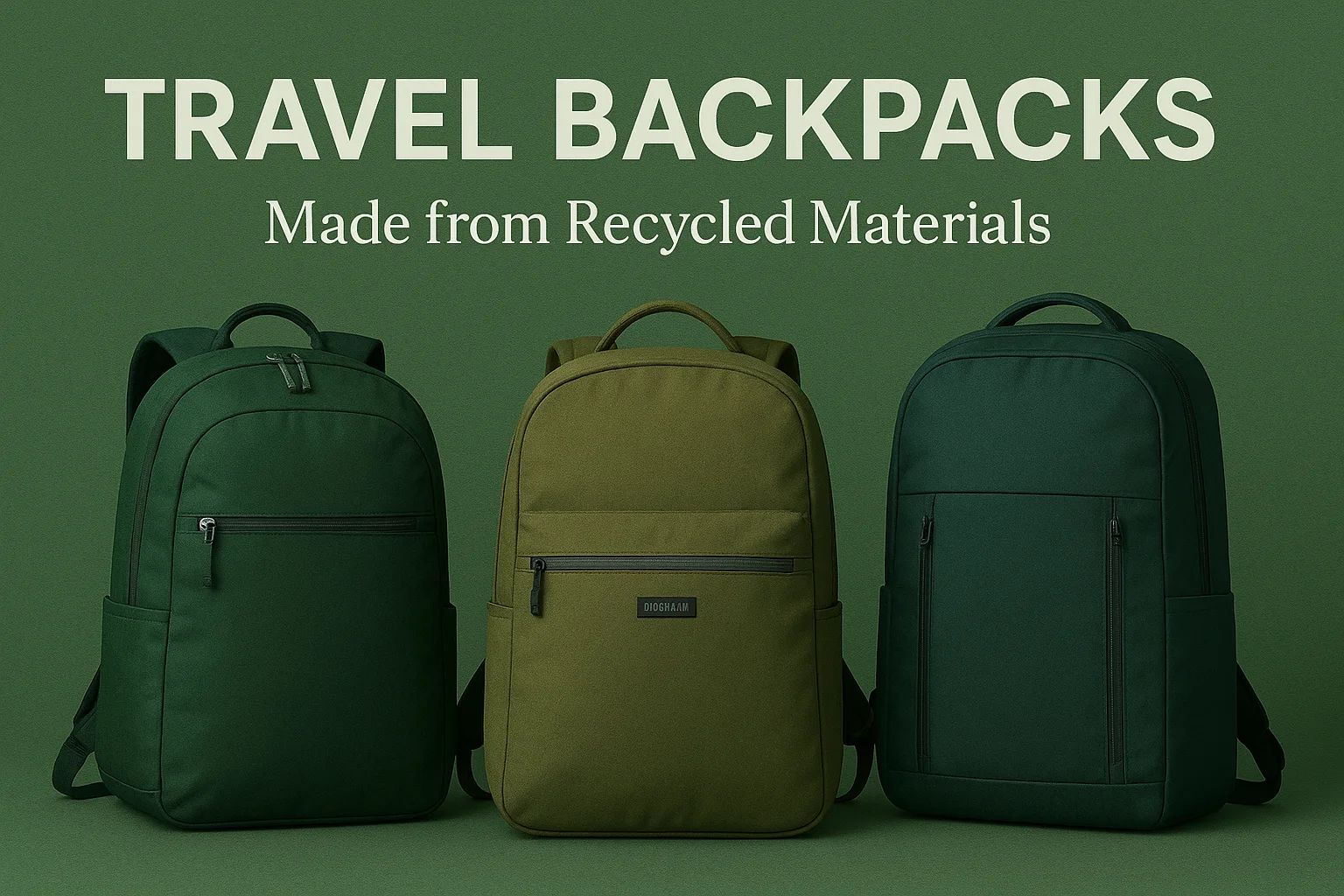Travel today is about more than visiting new places—it’s also about the footprint you leave behind. From single-use plastics to fast-fashion luggage, the choices we make often have hidden consequences for the environment. That’s why eco-conscious travelers are making the switch to travel backpacks made from recycled materials.
Instead of relying on virgin plastics or unsustainable fabrics, these backpacks transform waste into durable, stylish, and practical gear. In this article, we’ll dive into the benefits, explore the materials, review trusted brands, and explain how resources like Eco Gear Guides can help you select the right eco-friendly travel companion.
Why Travelers Are Choosing Recycled Backpacks

Travelers around the world are rethinking their gear. The need isn’t just comfort—it’s responsibility. Every recycled backpack you carry represents fewer bottles in landfills, fewer fishing nets in oceans, and fewer resources extracted from the planet.
Benefits That Go Beyond Travel
- Reduces Waste: One medium-sized recycled backpack can prevent 20–30 plastic bottles from ending up in landfills or oceans.
- Built to Last: Recycled nylon and polyester are engineered to resist tears and wear.
- Stylish Yet Responsible: Modern designs prove that eco-friendly doesn’t mean boring.
- Ethical Production: Many eco brands also ensure fair wages and safe conditions for workers.
Case in Point: A traveler who switched from a synthetic polyester backpack to a recycled rPET model reported using it for 6 years across 15 countries—with no replacements needed. That’s the equivalent of avoiding three low-quality backpacks.
What Are Recycled Travel Backpacks Made Of?
To understand their value, let’s look at the core materials used in production:
| Material | Comes From | Why It’s Ideal for Travel |
|---|---|---|
| Recycled Polyester (rPET) | Plastic bottles | Water-resistant, lightweight, resilient |
| Recycled Nylon | Old fishing nets & waste | Ultra-tough, great for outdoor adventures |
| Recycled Cotton | Fabric scraps | Soft, breathable, reduces textile waste |
| Upcycled Materials | Old clothes & offcuts | Unique styles, limited editions |
Features That Make Eco-Friendly Backpacks Stand Out
When choosing a travel backpack made from recycled materials, don’t just look at the eco tag—focus on features that matter for your journey:
Strong Build for Long-Term Travel
Recycled nylon backpacks are particularly good for trekking and hiking.
Weather Protection
Many recycled polyester bags come with natural water-resistance—perfect for unpredictable weather.
Comfort First
Look for padded straps, breathable mesh, and ergonomic weight distribution.
Organization That Saves Time
Multiple compartments, laptop sleeves, and secret zippers make your life on the road easier.
Top Sustainable Backpack Brands You Should Know

The good news? You don’t need to search endlessly—here are some standout eco-friendly brands:
Patagonia
Turns fishing nets and bottles into backpacks built for rugged travel. Their Black Hole series is especially popular among adventure seekers.
Fjällräven Re-Kånken
A global favorite that blends simplicity with durability—crafted entirely from recycled polyester.
Terra Thread
Known for Fairtrade-certified cotton backpacks that combine ethical sourcing with long-lasting quality.
Eco Gear Guides Selections
Instead of trying and failing with random brands, platforms like Eco Gear Guides curate eco-friendly backpacks after testing them for durability, comfort, and sustainability. This ensures travelers can make informed choices without hours of research.
Read More : How to Offset Your Travel Carbon Footprint
Real-World Impact: How One Backpack Creates Change
It’s easy to underestimate one purchase. But consider this:
- One recycled backpack = up to 30 bottles diverted from oceans
- One conscious traveler = years of reduced waste
- One global movement = millions of bottles saved
If even 10% of global travelers switched to recycled backpacks, over 300 million plastic bottles could be kept out of oceans annually.
Maintaining Your Recycled Backpack for Years
To ensure your eco-friendly backpack lasts a decade (and beyond):
- Wash gently with natural soap.
- Avoid machine drying—air drying preserves fabric.
- Repair small damages with patch kits.
- Store in a cool, dry place when not traveling.
This simple care routine ensures you save money and extend your positive environmental impact.
Conclusion
Choosing travel backpacks made from recycled materials is more than following a green trend—it’s making a responsible, long-term choice. These backpacks prove that durability, comfort, and design can go hand in hand with sustainability.
From recycled polyester to Fairtrade cotton, every material tells a story of waste transformed into something valuable. And with platforms like Eco Gear Guides, you can find expert-tested recommendations to ensure your next travel companion is as eco-friendly as your journey.
Your next adventure doesn’t just have to take you places—it can also help protect them.
Read More : How to Choose Green Hotels & Accommodations
FAQs
1. Do recycled backpacks last as long as traditional ones?
Yes. In fact, recycled nylon and rPET often have equal or higher durability.
2. Are eco-friendly backpacks only for casual travel?
No. Many are designed for trekking, camping, and even business travel.
3. Do they cost more than regular backpacks?
Not always. While premium eco-brands may be slightly higher, they last longer, saving you money.
4. How can I clean a recycled backpack?
Use natural soap and warm water, and always air dry to extend lifespan.
5. Where can I find the best eco-friendly backpack reviews?
Websites like Eco Gear Guides provide detailed comparisons with real traveler experiences.


